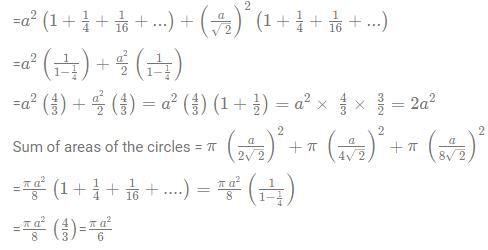CAT Mock Test- 6 (November 8) - CAT MCQ
30 Questions MCQ Test Daily Test for CAT Preparation - CAT Mock Test- 6 (November 8)
Which of the following statements is the author LEAST likely to agree with?
I. Bad ideas are more likely to raise human interest and enthusiasm than good ideas.
II. People are cognizant of bad ideas but still rely on them to make sense of the world.
III. New ideas can lead to fresh perspectives on the functioning of the world.
IV. Most ideas have very little bearing on the functioning of the world.
I. Bad ideas are more likely to raise human interest and enthusiasm than good ideas.
II. People are cognizant of bad ideas but still rely on them to make sense of the world.
III. New ideas can lead to fresh perspectives on the functioning of the world.
IV. Most ideas have very little bearing on the functioning of the world.
Which of the following is not true as per the passage?
Which of the following can be inferred from the passage?
According to the passage, the perpetrators of silent treatment are compelled to justify their behavior because
Why does Williams tag ostracism as " psychological quicksand"?
Which of the following statements is the author LEAST likely to agree with?
The author discusses the examples of the Leicestershire woman and the Black Plague to drive home the point that
Which of the following courses of action is the author LEAST likely to endorse?
The five sentences (labelled 1, 2, 3, 4, 5) given in this question, when properly sequenced, form a coherent paragraph. Each sentence is labelled with a number. Decide on the proper order for the sentences and key in this sequence of five numbers as your answer.
1. Camelids are unusual in that their modern distribution is almost the reverse of their origin.
2. The original camelids of North America remained common until the quite recent geological past, but then disappeared, possibly as a result of hunting or habitat alterations by the earliest human settlers, and possibly as a result of changing environmental conditions after the last ice age, or a combination of these factors.
3. Camelids first appeared around 45 million years ago during the middle Eocene, in present-day North America.
4. Three species groups survived: the dromedary of northern Africa and southwest Asia; the Bactrian camel of central Asia; and the South American group, which has now diverged into a range of forms that are closely related, but usually classified as four species: llamas, alpacas, guanacos and vicuñas.
5. The family remained confined to the North American continent until only about two or three million years ago, when representatives arrived in Asia, and (as part of the Great American Interchange that followed the formation of the Isthmus of Panam1] South America.
There is a sentence that is missing in the paragraph below. Look at the paragraph and decide in which blank (option 1, 2, or 3) the following sentence would best fit.
Sentence: Such conditions often manifest subtly, with societal norms discouraging individuals from seeking timely help.
Paragraph: Mental health remains a taboo topic in many societies, even though it's crucial to overall well-being. The stress of modern life, relentless digital connectivity, and social isolation have led to a rise in conditions like depression and anxiety. ____ (1) ____ . To tackle this, awareness campaigns and access to professional help are being amplified. ____ (2) ____ . Yet, overcoming deeply ingrained prejudices about mental health issues proves to be a monumental challenge. ____ (3) ____ .
The passage given below is followed by four alternate summaries. Choose the option that best captures the essence of the passage.
The recent trend towards space tourism represents a significant milestone in human space exploration. However, it also brings forth ethical dilemmas. The exorbitant costs associated with these ventures highlight stark economic disparities, as only the wealthy can afford such experiences. Moreover, the environmental impact of increased space travel remains largely unaddressed, with potential consequences for Earth’s upper atmosphere and beyond. As space tourism continues to develop, a regulatory framework is needed to mitigate environmental damage and consider the broader implications of commercializing space.
Read the following passage and answer the questions that follow:
The rain flashed across the midnight window with a myriad feet. There was a groan in outer darkness, the voice of all nameless dreads. The nervous candle-flame shuddered by my bedside. The groaning rose to a shriek, and the little flame jumped in a panic, and nearly left its white column. Out of the corners of the room swarmed the released shadows. Black specters danced in ecstasy over my bed.............................................
They talk of the candle-power of an electric bulb. What do they mean? It cannot have the faintest glimmer of the real power of my candle. It would be as right to express, in the same inverted and foolish comparison, the worth of "those delicate sisters, the Pleiades." That pinch of star dust, the Pleiades, exquisitely remote in deepest night, in the profound where light all but fails, has not the power of a sulphur match; yet, still apprehensive to the mind though tremulous on the limit of vision, and sometimes even vanishing, it brings into distinction those distant and difficult hints—hidden far behind all our verified thoughts—which we rarely properly view. I should like to know of any great arc-lamp which could do that. So the star-like candle for me. No other light follows so intimately an author's most ghostly suggestion. We sit, the candle and I, in the midst of the shades we are conquering, and sometimes look up from the lucent page to contemplate the dark hosts of the enemy with a smile before they overwhelm us; as they will, of course. Like me, the candle is mortal; it will burn out.
As the bed-book itself should be a sort of night-light, to assist its illumination, coarse lamps are useless. They would douse the book. The light for such a book must accord with it. It must be, like the book, a limited, personal, mellow, and companionable glow; the solitary taper beside the only worshiper in a sanctuary. That is why nothing can compare with the intimacy of candle-light for a bed-book. It is a living heart, bright and warm in central night, burning for us alone, holding the gaunt and towering shadows at bay. There the monstrous specters stand in our midnight room, the advance guard of the darkness of the world, held off by our valiant little glim, but ready to flood instantly and founder us in original gloom.
The wind moans without; ancient evils are at large and wandering in torment. The rain shrieks across the window. For a moment, for just a moment, the sentinel candle is shaken, and burns blue with terror. The shadows leap out instantly. The little flame recovers, and merely looks at its foe the darkness, and back to its own place goes the old enemy of light and man. The candle for me, tiny, mortal, warm, and brave, a golden lily on a silver stem!
Q. From the information provided in the passage, we can infer that the Pleiades
Read the following passage and answer the questions that follow:
The rain flashed across the midnight window with a myriad feet. There was a groan in outer darkness, the voice of all nameless dreads. The nervous candle-flame shuddered by my bedside. The groaning rose to a shriek, and the little flame jumped in a panic, and nearly left its white column. Out of the corners of the room swarmed the released shadows. Black specters danced in ecstasy over my bed.............................................
They talk of the candle-power of an electric bulb. What do they mean? It cannot have the faintest glimmer of the real power of my candle. It would be as right to express, in the same inverted and foolish comparison, the worth of "those delicate sisters, the Pleiades." That pinch of star dust, the Pleiades, exquisitely remote in deepest night, in the profound where light all but fails, has not the power of a sulphur match; yet, still apprehensive to the mind though tremulous on the limit of vision, and sometimes even vanishing, it brings into distinction those distant and difficult hints—hidden far behind all our verified thoughts—which we rarely properly view. I should like to know of any great arc-lamp which could do that. So the star-like candle for me. No other light follows so intimately an author's most ghostly suggestion. We sit, the candle and I, in the midst of the shades we are conquering, and sometimes look up from the lucent page to contemplate the dark hosts of the enemy with a smile before they overwhelm us; as they will, of course. Like me, the candle is mortal; it will burn out.
As the bed-book itself should be a sort of night-light, to assist its illumination, coarse lamps are useless. They would douse the book. The light for such a book must accord with it. It must be, like the book, a limited, personal, mellow, and companionable glow; the solitary taper beside the only worshiper in a sanctuary. That is why nothing can compare with the intimacy of candle-light for a bed-book. It is a living heart, bright and warm in central night, burning for us alone, holding the gaunt and towering shadows at bay. There the monstrous specters stand in our midnight room, the advance guard of the darkness of the world, held off by our valiant little glim, but ready to flood instantly and founder us in original gloom.
The wind moans without; ancient evils are at large and wandering in torment. The rain shrieks across the window. For a moment, for just a moment, the sentinel candle is shaken, and burns blue with terror. The shadows leap out instantly. The little flame recovers, and merely looks at its foe the darkness, and back to its own place goes the old enemy of light and man. The candle for me, tiny, mortal, warm, and brave, a golden lily on a silver stem!
Q. Which of the following can be said to be true about the shriek described in the first paragraph of the passage?
Read the following passage and answer the questions that follow:
The rain flashed across the midnight window with a myriad feet. There was a groan in outer darkness, the voice of all nameless dreads. The nervous candle-flame shuddered by my bedside. The groaning rose to a shriek, and the little flame jumped in a panic, and nearly left its white column. Out of the corners of the room swarmed the released shadows. Black specters danced in ecstasy over my bed.............................................
They talk of the candle-power of an electric bulb. What do they mean? It cannot have the faintest glimmer of the real power of my candle. It would be as right to express, in the same inverted and foolish comparison, the worth of "those delicate sisters, the Pleiades." That pinch of star dust, the Pleiades, exquisitely remote in deepest night, in the profound where light all but fails, has not the power of a sulphur match; yet, still apprehensive to the mind though tremulous on the limit of vision, and sometimes even vanishing, it brings into distinction those distant and difficult hints—hidden far behind all our verified thoughts—which we rarely properly view. I should like to know of any great arc-lamp which could do that. So the star-like candle for me. No other light follows so intimately an author's most ghostly suggestion. We sit, the candle and I, in the midst of the shades we are conquering, and sometimes look up from the lucent page to contemplate the dark hosts of the enemy with a smile before they overwhelm us; as they will, of course. Like me, the candle is mortal; it will burn out.
As the bed-book itself should be a sort of night-light, to assist its illumination, coarse lamps are useless. They would douse the book. The light for such a book must accord with it. It must be, like the book, a limited, personal, mellow, and companionable glow; the solitary taper beside the only worshiper in a sanctuary. That is why nothing can compare with the intimacy of candle-light for a bed-book. It is a living heart, bright and warm in central night, burning for us alone, holding the gaunt and towering shadows at bay. There the monstrous specters stand in our midnight room, the advance guard of the darkness of the world, held off by our valiant little glim, but ready to flood instantly and founder us in original gloom.
The wind moans without; ancient evils are at large and wandering in torment. The rain shrieks across the window. For a moment, for just a moment, the sentinel candle is shaken, and burns blue with terror. The shadows leap out instantly. The little flame recovers, and merely looks at its foe the darkness, and back to its own place goes the old enemy of light and man. The candle for me, tiny, mortal, warm, and brave, a golden lily on a silver stem!
Q: Why does the author describe the candle as "mortal"?
Directions: Answer the question on the basis of the information given below.
Akash, a mechanic, used to make and sell four types of custom-made bikes. He used four different brands of each of the four major components of bikes which were tires, engine, speedometer and brakes.
The different brands of tires were Kapollo, Zeat, Chelin and NRF. The different brands of engine were Kamaha, Zonda, Tajaj and Genfield. The different brands of speedometer were Lanta, Etre, Kamp and Dale. The different brands of brakes were Rakas, Cando, Abco and Losa. Out of the four models which Akash sold, one was the cheapest, in which he used the cheapest brand of all the four components, and the other was the costliest, in which he used the costliest brand of all the four components.
Further, the following information is known:
a) The Etre speedometer is the costliest among the four brands of speedometer.
b) Losa brakes can be fitted only with Kapollo tires.
c) Chelin tires can be fitted only with Abco brakes and Tajaj engine.
d) NRF tires cannot be fitted with Genfield engine, and Zeat tires can be fitted only with Kamaha engine.
e) The costliest brakes are neither of Cando nor of Losa brand.
f) Abco brakes and Lanta speedometer are used on the same bike.
g) Tajaj engines are the cheapest among the four engine brands.
h) Dale speedometer cannot be used with Chelin and Kapollo tires.
Q. Which brand's engine is the costliest?
Directions: Answer the question on the basis of the information given below.
Akash, a mechanic, used to make and sell four types of custom-made bikes. He used four different brands of each of the four major components of bikes which were tires, engine, speedometer and brakes.
The different brands of tires were Kapollo, Zeat, Chelin and NRF. The different brands of engine were Kamaha, Zonda, Tajaj and Genfield. The different brands of speedometer were Lanta, Etre, Kamp and Dale. The different brands of brakes were Rakas, Cando, Abco and Losa. Out of the four models which Akash sold, one was the cheapest, in which he used the cheapest brand of all the four components, and the other was the costliest, in which he used the costliest brand of all the four components.
Further, the following information is known:
a) The Etre speedometer is the costliest among the four brands of speedometer.
b) Losa brakes can be fitted only with Kapollo tires.
c) Chelin tires can be fitted only with Abco brakes and Tajaj engine.
d) NRF tires cannot be fitted with Genfield engine, and Zeat tires can be fitted only with Kamaha engine.
e) The costliest brakes are neither of Cando nor of Losa brand.
f) Abco brakes and Lanta speedometer are used on the same bike.
g) Tajaj engines are the cheapest among the four engine brands.
h) Dale speedometer cannot be used with Chelin and Kapollo tires.
Q. Which speedometer is used along with Losa brakes?
Directions: Answer the question on the basis of the information given below.
Akash, a mechanic, used to make and sell four types of custom-made bikes. He used four different brands of each of the four major components of bikes which were tires, engine, speedometer and brakes.
The different brands of tires were Kapollo, Zeat, Chelin and NRF. The different brands of engine were Kamaha, Zonda, Tajaj and Genfield. The different brands of speedometer were Lanta, Etre, Kamp and Dale. The different brands of brakes were Rakas, Cando, Abco and Losa. Out of the four models which Akash sold, one was the cheapest, in which he used the cheapest brand of all the four components, and the other was the costliest, in which he used the costliest brand of all the four components.
Further, the following information is known:
a) The Etre speedometer is the costliest among the four brands of speedometer.
b) Losa brakes can be fitted only with Kapollo tires.
c) Chelin tires can be fitted only with Abco brakes and Tajaj engine.
d) NRF tires cannot be fitted with Genfield engine, and Zeat tires can be fitted only with Kamaha engine.
e) The costliest brakes are neither of Cando nor of Losa brand.
f) Abco brakes and Lanta speedometer are used on the same bike.
g) Tajaj engines are the cheapest among the four engine brands.
h) Dale speedometer cannot be used with Chelin and Kapollo tires.
Q. Which brand's brakes are the costliest?
Directions: Answer the question on the basis of the information given below.
In an inter-school quiz contest, teams A, B and C reached the finals. In the final, each team was asked 4 questions, followed by the next team. When all the teams had finished one such round, the process was repeated. If a team answered a question correctly, then the team was awarded 20 points, and if a team answered incorrectly, the other teams were awarded 10 points each. The first team to score 500 points won the competition. In the contest, the final scores were: A = 500, B = 340, and C = 240. If out of a total of 54 questions asked, 37 were answered correctly, then answer the following question:
Q. The least number of incorrect questions answered by any team is _____.
Directions: Study the information given below and answer the question that follows.
On a particular day, six monster trucks Truck-1 to Truck 6 participated in a racing event consisting of 5 laps - lap-1 to lap-5. Each truck had different mileage. It is known that the quantity of fuel with any truck immediately before it crossed Lap 4 was the same.
The following graph provides the quantity of fuel (in gallons) that each truck used during each Lap:
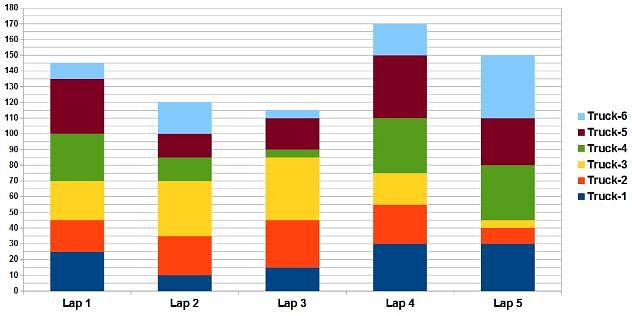
Q. If each truck used at least 50% of the fuel that it had at the beginning of the race, what is the maximum quantity of fuel with any truck before any of them crossed Lap 1?
A town had a population of 140000. 1/7th of the people were diagnosed with a disease. The municipality had arranged for 2 variants of medicines A and B to treat all of them. A succeeded in healing 1/14th of patients it was given to, and B succeeded in healing 40% of people it was given to. Finally, a total of 3400 people recovered, with the help of these medicines. Find how many people were given Medicine A.
The following figure consists of a square, inside which there is a second square formed by joining the midpoints of the sides of the outer square. Inside the second square is inscribed a circle, and it continues in a similar manner. Find the ratio of the sum of areas of all the squares combined to the sum of the areas of the circles combined.
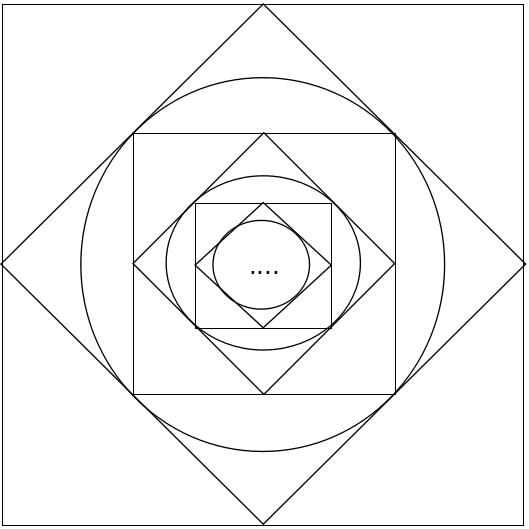
How many ordered pairs (x,y) exist that satisfy the following inequality?
xy + 5x + 6y < 20
It has been given that x is a whole number and y is a natural number.
In a test, there are 34 multiple-choice questions. A correct answer fetches +3, and a wrong answer fetches -1. There is no penalty for unattempted questions. In how many ways can a student achieve 67 marks in this test?
Ram bought oranges from the wholesaler. After buying the oranges from the shop of the whole seller for his own shop, he found that 15% of his oranges had been damaged. By what percentage should he markup the cost to make a 10% profit
Given the quadratic equation x2 - (A - 3)x - (A - 7), for what value of A will the sum of the squares of the roots be zero?
Minku, Tinku, Pinku and Rinku contribute a total of Rs. 360 to buy a gift. Minku contributes one-fifth of what the others contribute. Tinku contributes one-fourth of what the others contribute. Pinku contributes one-third of what the others contribute. Find the amount contributed by Rinku. Key in the value in Rs.
If N is a 26 digit number, and M= log 10.
Let F(x) = logN/M, what will be the integral part of F(x)?
A cube is painted on five visible faces. Now it is cut in 64 identical smaller cubes by applying three equidistant cuts along each edge. Among 64 identical smaller cubes, how many cubes have no painted face?
|
152 docs|327 tests
|













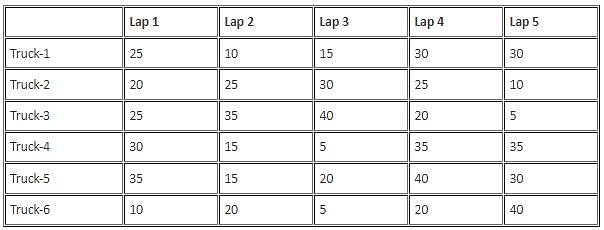
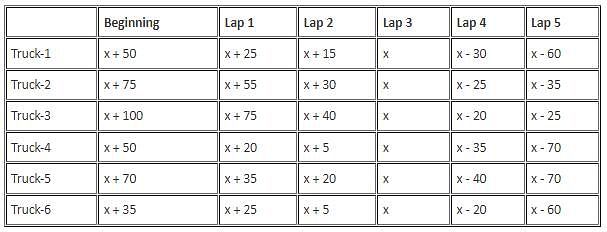


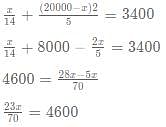


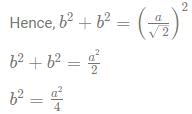


 ...
...